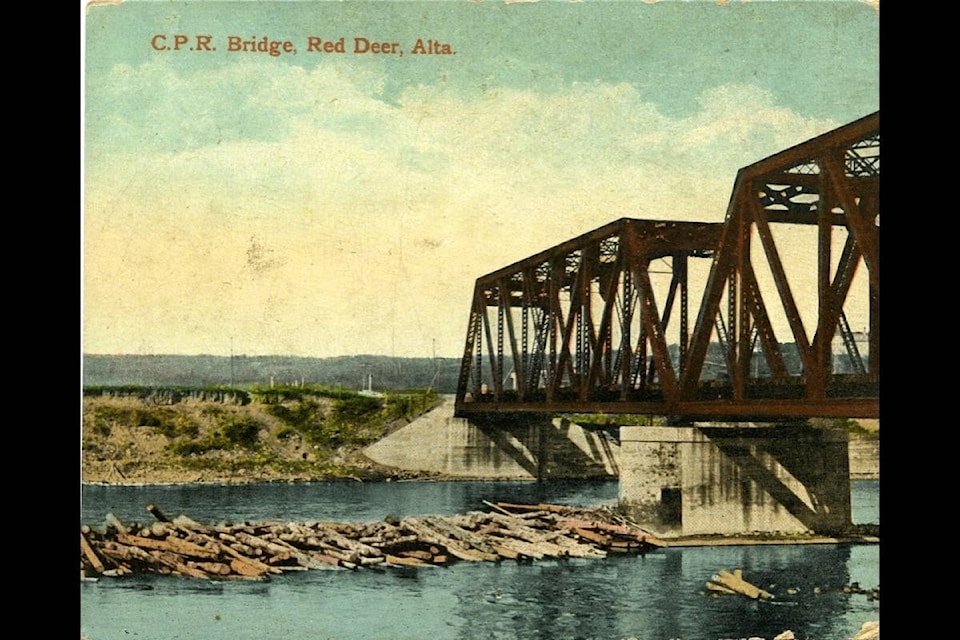Central Alberta has just experienced one of the soggier springs in recent memory. However, at some 120 millimetres of rain over the month, it has not been a record.
By way of comparison, more than 220 millimetres of rain fell in June of 1970, with a third of that falling on the last day of the month.
Another soggy spring, which initially seemed to be disastrous, but laid the foundation for one of the best years in Red Deer’s history, occurred in 1915. Ironically, this happened in the first part of the First World War, which was generally one of the greatest tragedies in history.
During the middle of May 1915, there were a couple of spells of wet weather. However, in early June, the rain really began to pelt down. By the third week of June, it was reported that more than 122 millimetres of rain had fallen, with more (110 millimetres) to come before the month was over.
The soggy weather began to take its toll. Most of the local baseball games were cut short or cancelled because of rain. The weekly Red Deer Farmers’ Market reported rotten sale days. On one morning, only one customer showed up.
Towards the latter part of June, Waskasoo Creek began to seriously flood. The bridge at the south end of 48th Avenue, leading into Waskasoo Park (the current-day Rotary Park), was washed out.
Plans were quickly made to start constructing a new bridge before the annual Dominion Day (July 1) sports day and celebrations at the fairgrounds.
Concerns began to grow about flooding along the Red Deer River. There was already a good deal of water flowing down the river due to the snow melt from the mountains. With the continuing heavy rains, the water levels were beginning to spike upwards.
Early in the morning on Sunday, June 27, it was reported that the river was running at more than three metres above normal. By 9 p.m., the gauges showed that the river was now up 5.8 metres (19.08 feet), a good half metre more than the highest levels reached during spring ice jams. It was a record spring flood.
After the water finally subsided, the assessment of the damage followed. There was a lot along the river and Waskasoo Creek. However, it was not as bad as some other communities had experienced.
Red Deer’s bridges had held, but in Calgary, two bridges were swept away. A few houses in Red Deer got water in them, but in Edmonton, 500 houses were flooded and 20 of those were swept away by the North Saskatchewan River.
Fortunately, while the spring was very wet, as the summer progressed, the weather became warm and dry. There was very little hail. Growing conditions became practically ideal. In mid-August, the Alberta and federal agricultural departments projected one of the very best harvests on record.
As the warm dry weather continued into the fall, those projections held true. The provincewide yields of wheat (the main crop at the time) hit more than 32 bushels per acre. The 10-year average at the time was only 23 bushels to the acre.
Other crops and gardens registered spectacular yields. Livestock did well with the huge cuts of hay. The fall of 1915 had become one of great bounty.
Normally, when the amounts harvested spike upwards, prices drop. In 1915, wartime demands for food meant that agricultural prices remained high. Consequently, farmers had one of their most profitable years ever.
The wonderful economic boost for the farm sector was quickly felt in agricultural service communities such as Red Deer. Before the end of the year, two large grocery warehouses were built and several other new businesses opened their doors.
With their much improved incomes, farmers were able to buy newfangled tractors and other mechanized equipment. Normally, wartime conditions would have meant a shortage of such machinery.
However, since the United States had not joined the war yet, supplies of tractors and other farm equipment remained surprisingly good. The same was true of automobiles.
The continuation of the war meant many tragedies and economic hardships lay in the future. Nevertheless, 1915 was long remembered as one of the “best years ever” for central Alberta and Western Canada.
Red Deer historian Michael Dawe’s column appears Wednesdays.
